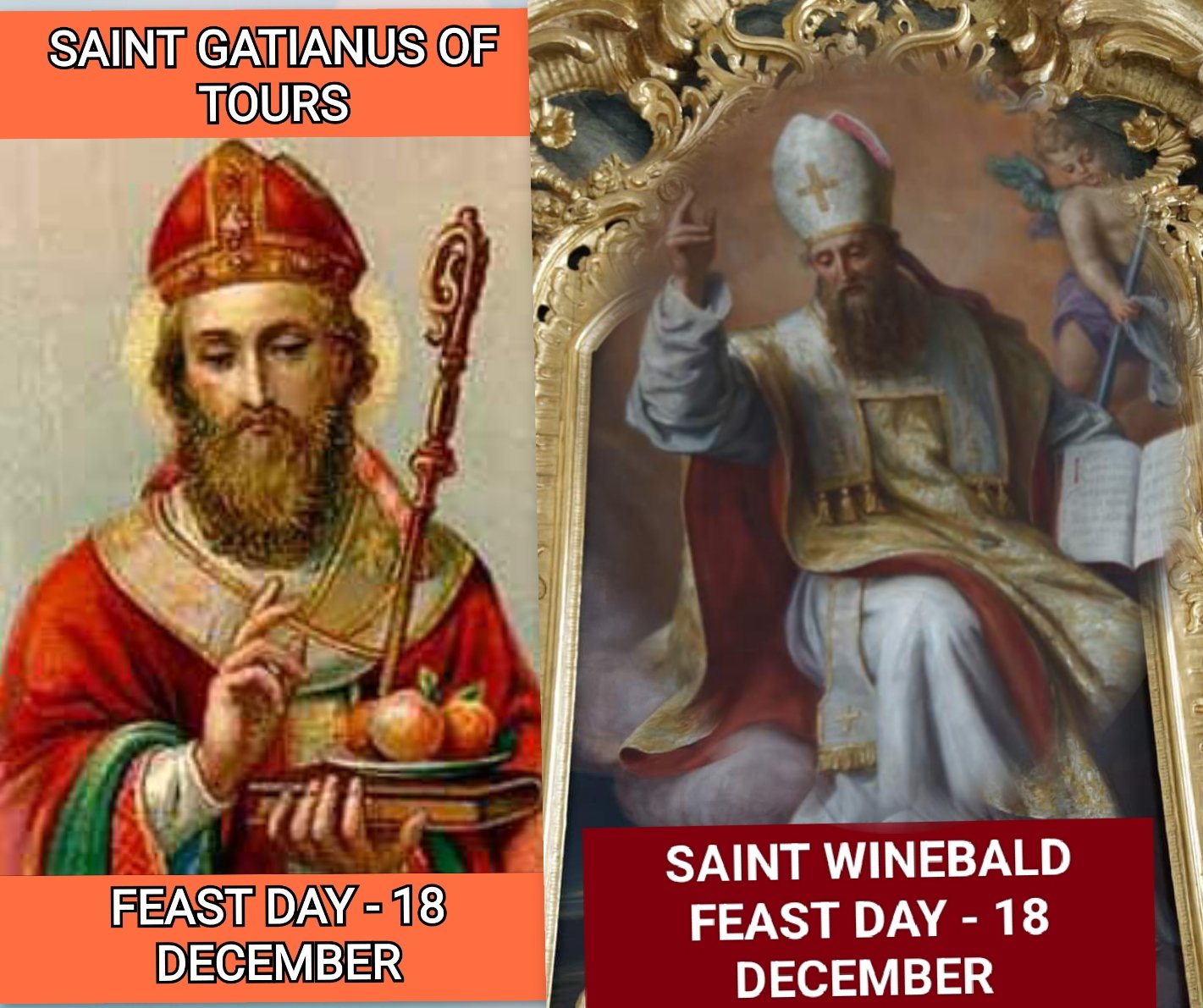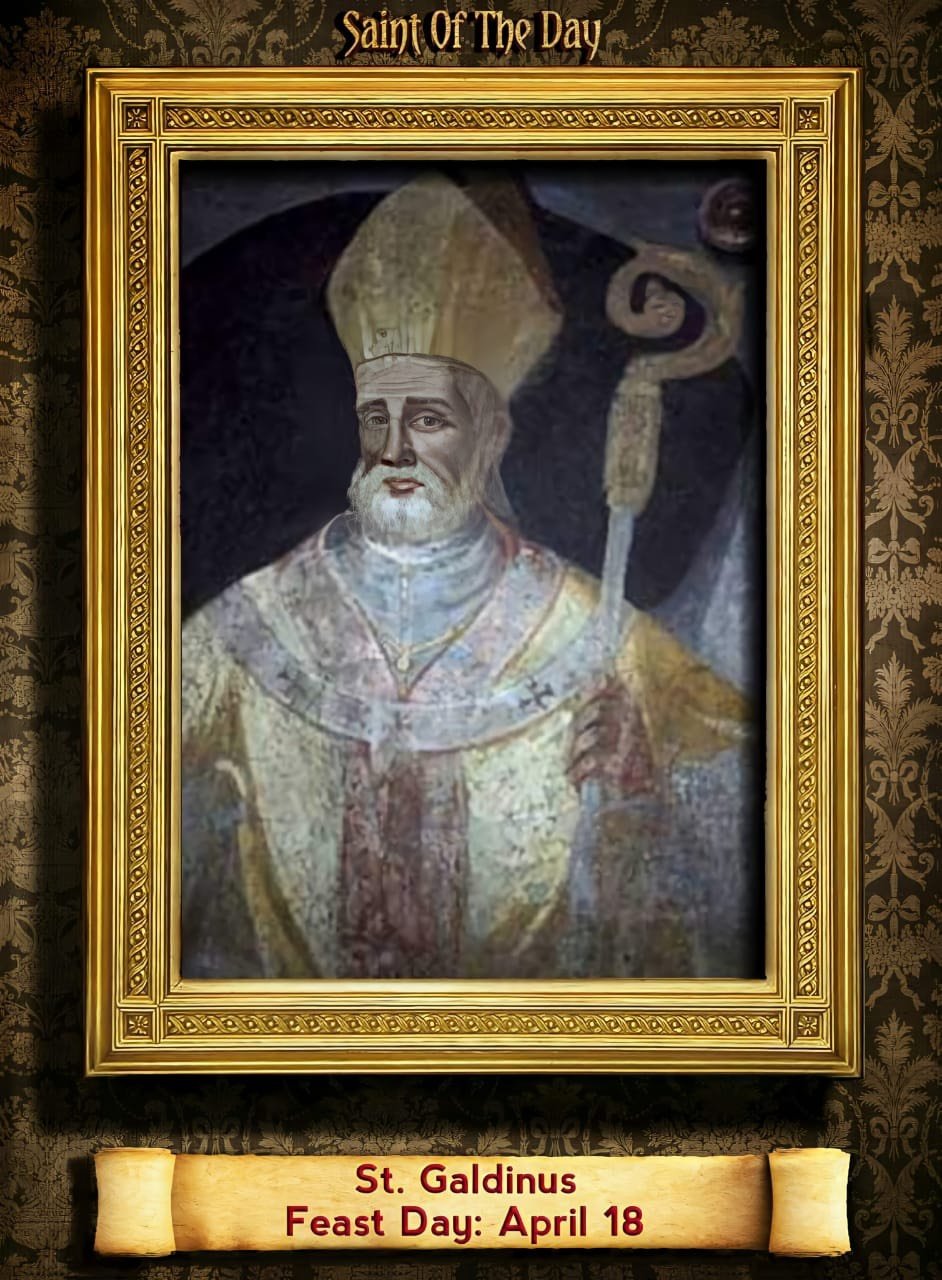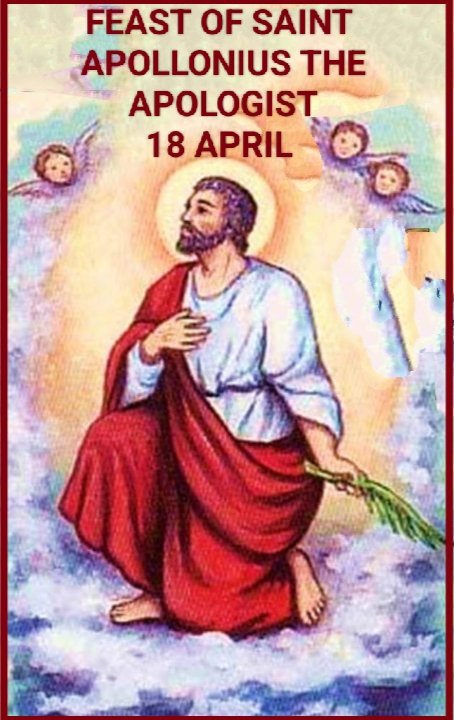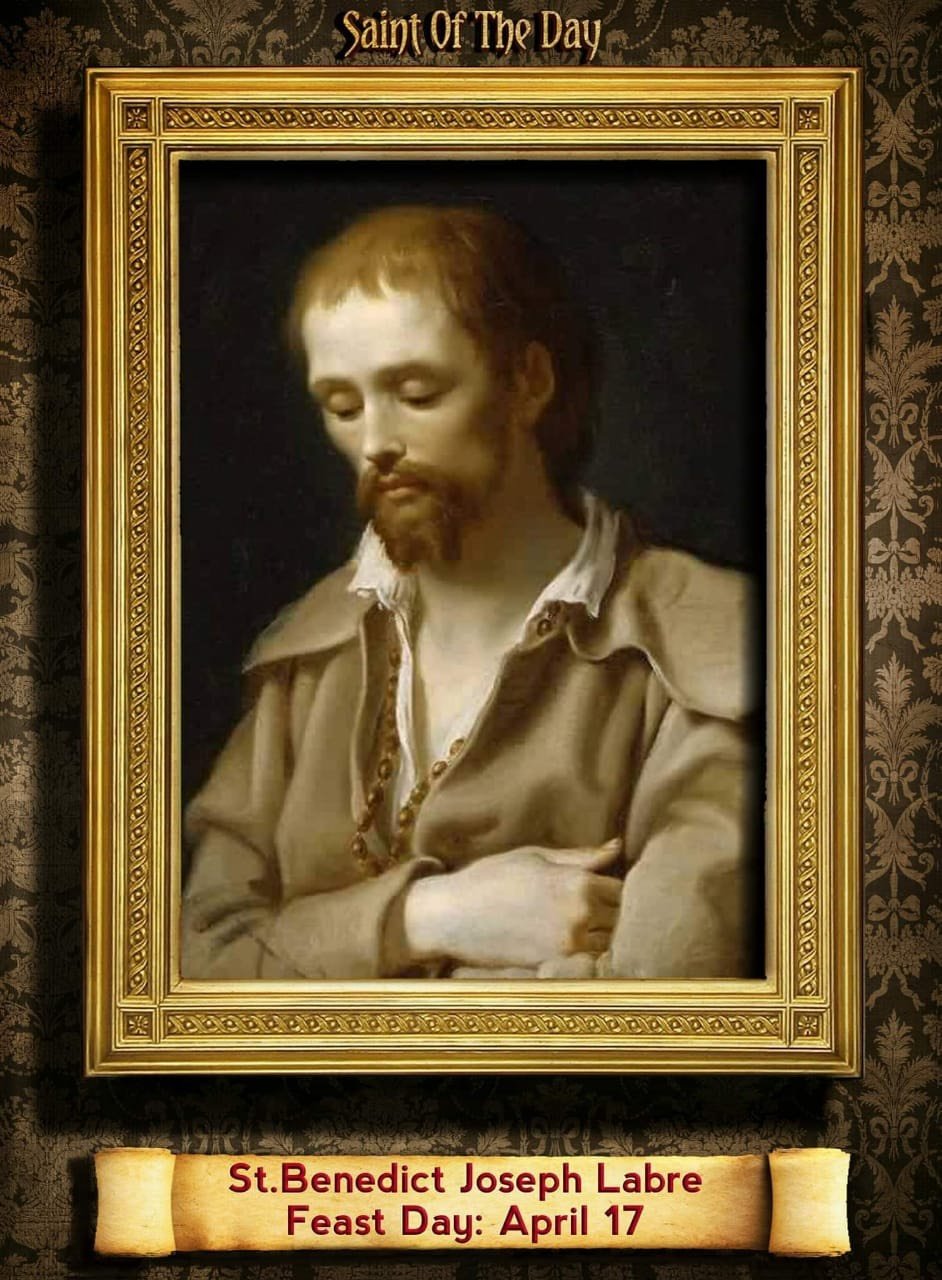
Isaiah 7:14
December 17, 2022
FEAST OF THE EXPECTATION OF THE BLESSED VIRGIN MARY – 18 DECEMBER
December 18, 2022FEAST OF SAINTS GATIANUS AND WINIBALD
FEAST DAY – 18th DECEMBER
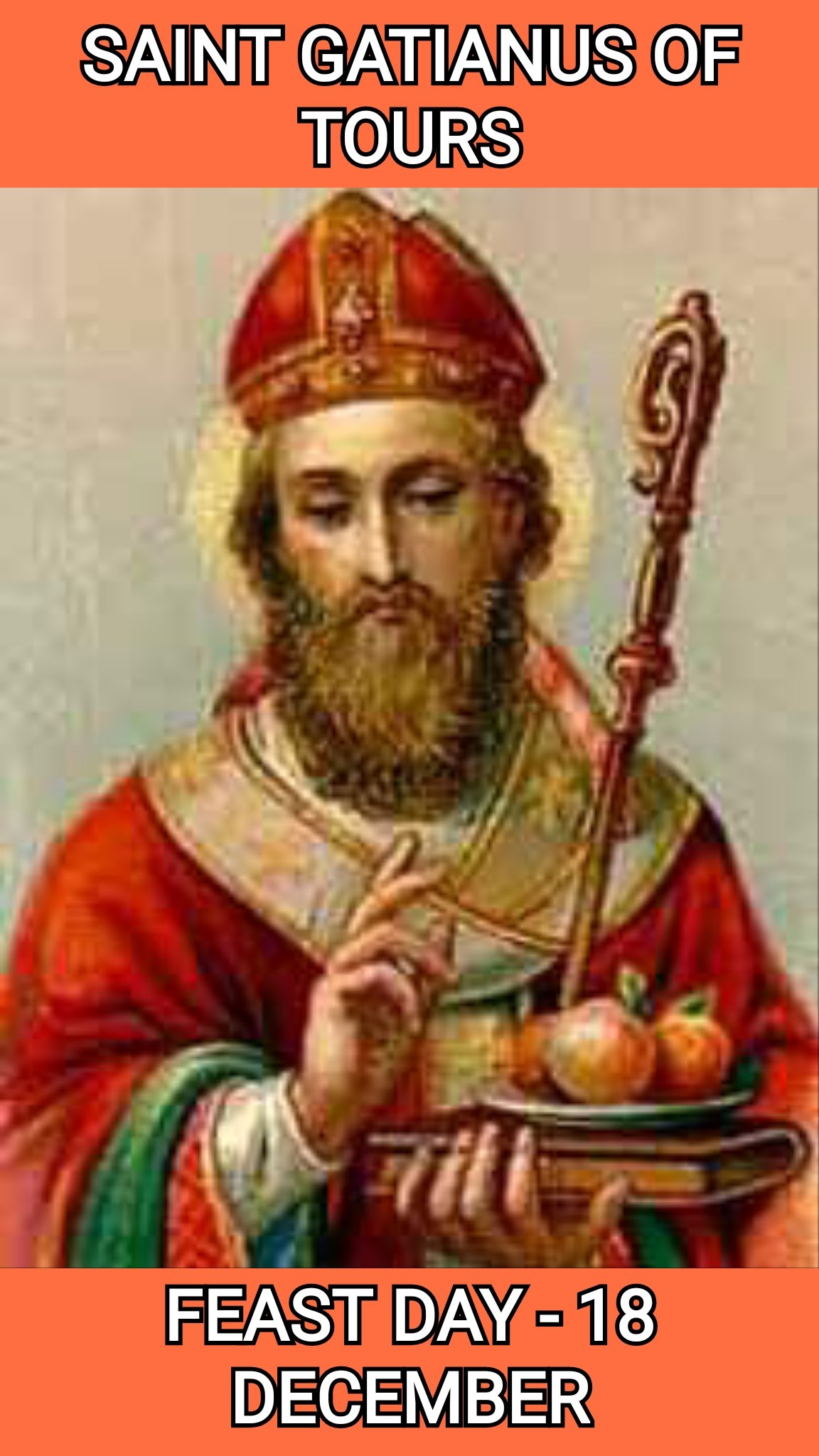
SAINT GATIANUS OF TOURS
Gatianus, in the third century AD, was the founding bishop of the see of Tours. He was one of the “seven apostles of Gaul” commissioned by Pope Fabian to evangelize in the region. According to Christian historians, during the consulship of the Emperor Decius and Vettius Gratus (250 AD), Pope Fabian sent out seven bishops from Rome to Gaul to preach the Gospel: Gatianus to Tours, Trophimus to Arles, Paul to Narbonne, Saturnin to Toulouse, Denis to Paris, Austromoine to Clermont, and Martial to Limoges. A community of Christians had already existed for many years in Lyon, where Irenaeus had been bishop.
As with other founders of the seven Catholic churches of Gaul, especially Martial, Gatianus became confounded in later Christian mythology with the “seventy-two disciples of Christ”, alleged to have been sent into Gaul during the first century, by Saint Peter himself.
Other details of his biography, while not as easily disprovable, are also largely legendary. Gregory of Tours, writing in the 6th century, is a more dependable source for the few biographical details concerning his predecessor. According to the Catholic historian Mons. Louis Duchesne (Christian Worship: Its Origin and Evolution), the traditions preserved at Tours furnished Gregory with only the name of Gatianus and perhaps the 50-year extent of his episcopacy.
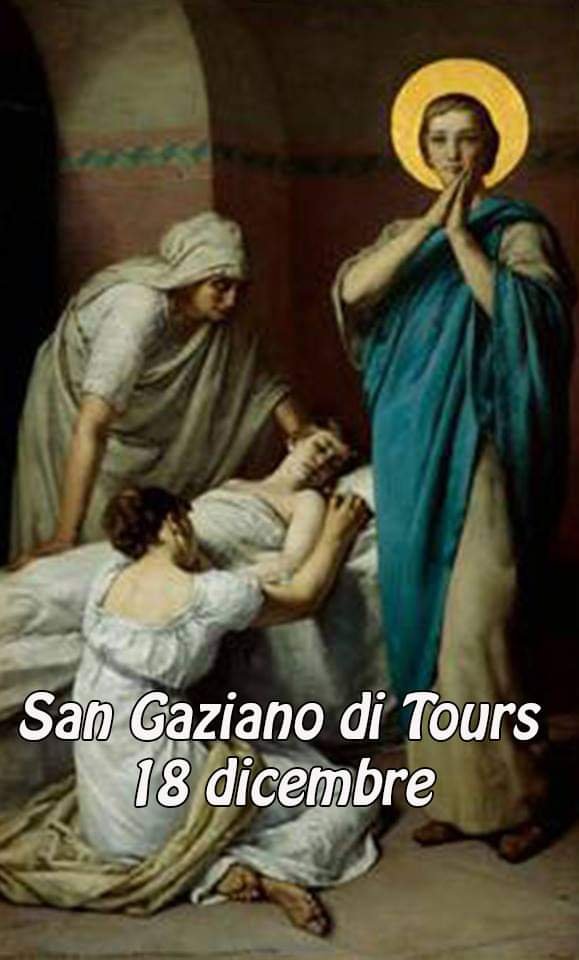
It was by comparison with a brief early biography of Saturninus of Toulouse (Passio S. Saturnini) that Gregory arrived at the date 250 for the beginning of Gatianus’ ministry at Tours (History of the Franks, 1.30). There were few Christians in Tours at that time, and in one of the troubled years of his Episcopate he is said for a time to have lain concealed in a cave on the banks of the Loire, at a spot where later rose the great Abbey of Marmoutier, and Gregory states that Gratianus would go into the city only when opportunities of preaching presented themselves.
He devoted half a century to evangelization, amid innumerable difficulties, and at his death the diocese of Tours was securely established. In a part of the Empire where Mithraism was a dominating force among the legions, the Abbé Jaud reports that Gatianus likewise retreated into a grotto and there celebrated a mystical banquet (célébrait les saints mystères), but that of Christianity.
Gatianus was often portrayed officiating at a ceremony in a cavern-like setting. Two grottos cut into the limestone hill above the river Loire, across from Tours at the largely demolished Marmoutier Abbey, are designated the first sites where Gatianus celebrated the liturgy.

After Gatianus’ death, during renewed persecution of Christians, the see of Tours remained unoccupied for 36 years. The Christians were dispersed and any direct connection with the historical Gatianus was irretrievably broken. Gregory records the second bishop as Lidorius, traditionally credited with building the predecessor of the present cathedral in Tours, and states that he was bishop for 33 years until about the time Saint Martin arrived in Tours in 371 AD.
However, Martin found few Christians in this city; local lore nevertheless kept the legend of Gatianus alive. Martin found Gatianus’ burial site, and always venerated his predecessor. With the rise in importance of Paris, Gatianus came to be seen more and more as a disciple of Saint Denis, and is so described at many modern Catholic websites.
Tours became a major pilgrimage site, focused on the tomb of Saint Martin of Tours. The cathedral, originally consecrated to Saint Maurice, was reconsecrated to Saint Gatianus at its 13th century rebuilding. His relics were destroyed in 1793, during the French Revolution. Petty ambitions and little tragedies of mid-19th century provincial life, centered on the cathedral, are portrayed in Honoré de Balzac’s Le Curé de Tours (“The curate of Tours”).
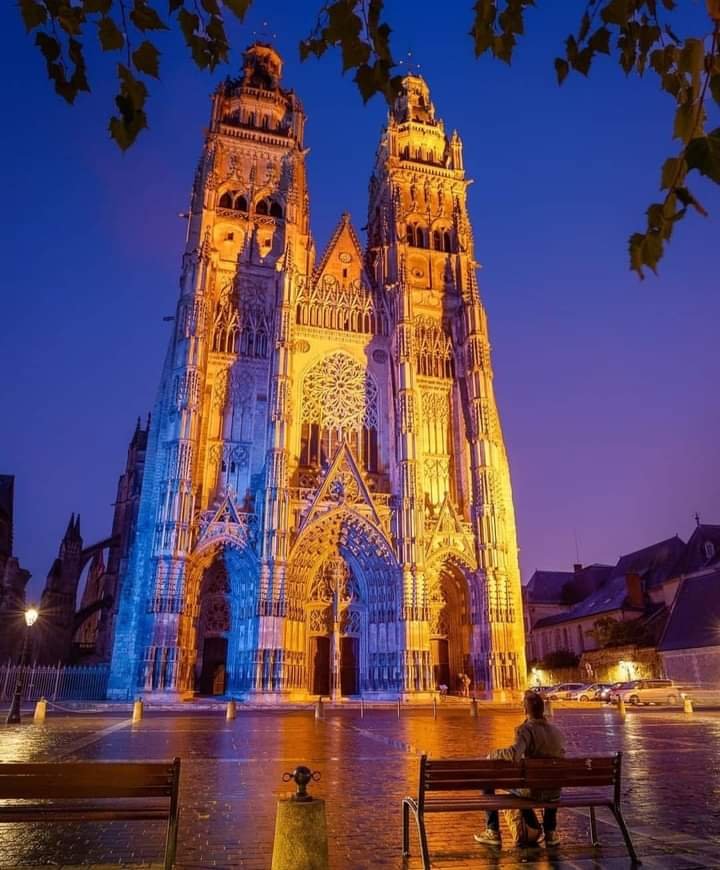
Saint Gatianus’ day is observed on 18 December. Saint-Gatien-des-Bois is a commune in Lower Normandy (Calvados), France. Saint-Gatien has a familiar ring in French, and the golf course and the airport at Deauville, schools, and other institutions bear his name.
St Gregory of Nazianzen wrote this poem in St Gatian’s honour and it appears in the Roman Martyrology:
“You dissolved darkness
and gave birth to Light
in order to create all things in Light
and to give consistency, to unstable matter,
by shaping it into the shape of a world.
You have, here below,
introduced the image of splendour from above,
so that by the Light man looks at the Light
and becomes entirely Light.”
PRAYER
Lord Jesus, thank you for the holy and edifying example of your Saint Gatian. We pray that You will continue to uphold faithful shepherds to watch over Your flock and lead us to eternal life. Amen

Saint Gatianus of Tours, pray for us.
+++++++++++++++++++++++++++++++++
SAINT WINEBALD
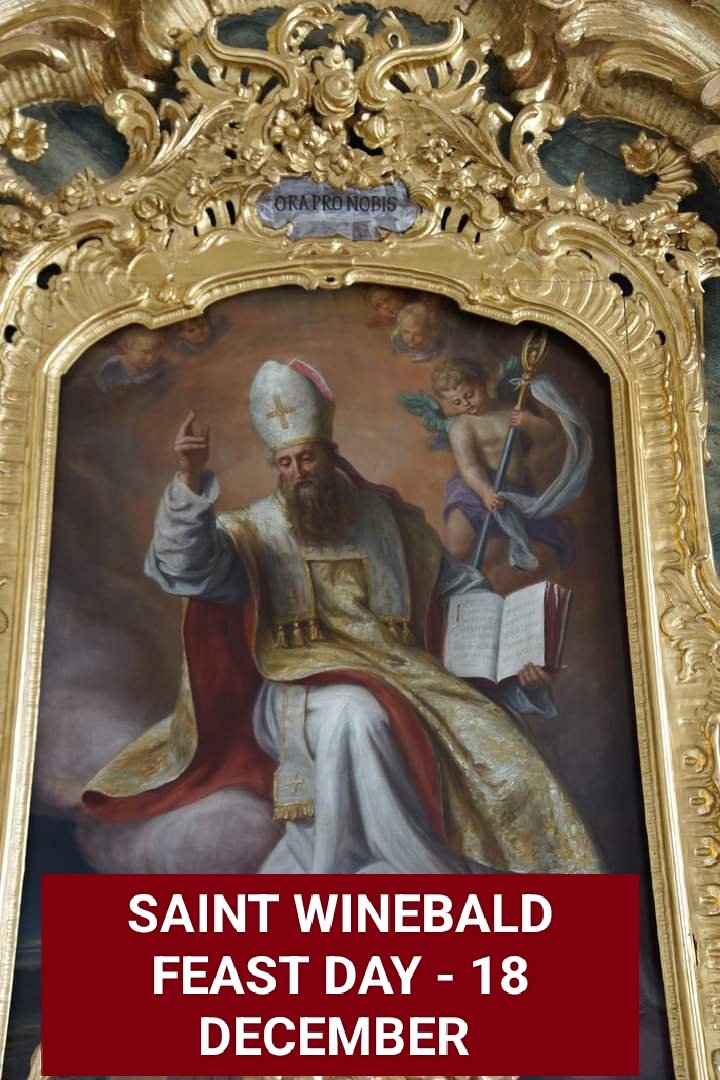
Winibald (c. 702 – 18 December 761) was abbot of the Benedictine double monastery of Heidenheim. Winibald or Winebald is one of those devout English missionaries who evangelized Europe, resulting in the flourishing of the Catholic faith and the beginning of a number of monasteries, thus laying the foundations of Christianity in what is now Germany, France, Holland, Austria, Belgium, and Luxembourg.
Winibald’s father was a West Saxon nobleman, Saint Richard the Pilgrim and his mother was Saint Wuna of Wessex. Saint Willibald was his brother. With his father and brother he made a pilgrimage to Rome around the year 721. His father died in Italy. In Rome, they fell ill, possibly with malaria, although Hygeburg says it was the Black Plague.
Once recovered, Willibald continued to the Holy Land, while Winebald, who from his childhood did not have a strong constitution, remained at Rome, to recover and study. In 730, Winibald returned to England and engaged a third brother and several amongst his kindred and acquaintances to accompany him in his journey back to Rome to begin a monastic life there.
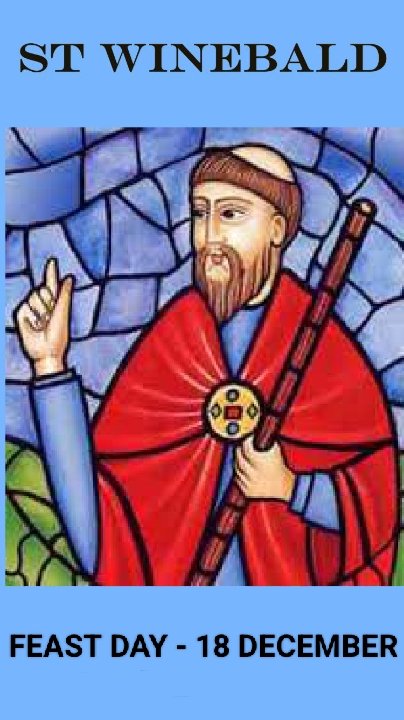
Around 737, Boniface visited Rome. By this time Willibald had returned from his travels, and had become a monk at Monte Cassino. Boniface recruited both nephews for the German mission. Willibald was ordained and based in Eichstätt. Boniface received a promise that Winnebald would go to Germany. Winibald arrived in Thuringia on 30 November, 740, and was ordained priest.
He was placed in charge of seven churches, including one at Erfurt. Winibald established a monastery in Schwanfeld, but in 742 transferred it to Heidenheim, where the brothers founded a double monastery for the training of priests and as a center of learning.

Winibald became the first abbot. Winibald took part in the Concilium Germanicum, in 742, and subscribed Pepin’s donation to Fulda in 753. In 762, he joined the League of Attigny, a confraternity of prayer established by Chrodegang, Archbishop of Metz. All this the saint accomplished in spite of continual illness, which prevented him from ending his life at Monte Cassino as he had hoped.
In 761, Winibald visited St. Boniface’s shrine at Fulda and on the way home died at Heidenheim on December 18, 761. His feast day is December 18. In art, he is portrayed as an abbot with a bricklayer’s trowel. He is a patron saint of construction workers.
PRAYER
Almighty God, you blessed Saint Richard the Pilgrim and Saint Wuna of Wessex with three saintly children and as we celebrate the feast of one of those Saints, Winibald or Winebald, we pray that just as he was no stranger to suffering, having a weak constitution, through his intercessory prayers, we may obtain endurance in the trials of our life, always giving you praise and worship in Jesus’ Name. Amen
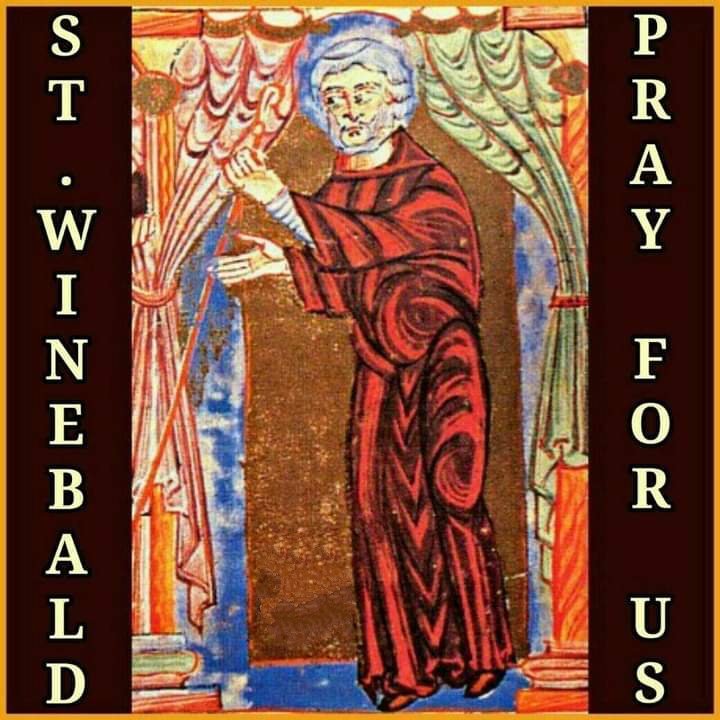 Saint Winibald, pray for us.
Saint Winibald, pray for us.

